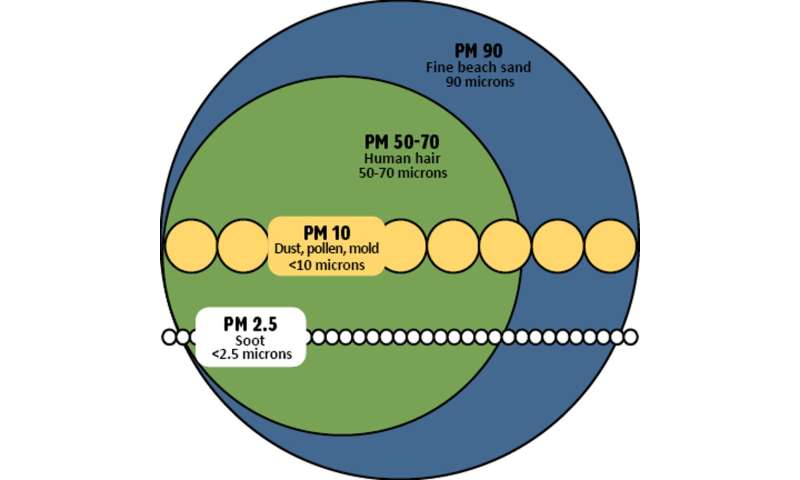Academic achievement is influenced by how pupils 'do' gender at school

The study, by researchers at the University of Cambridge, suggests that young people's attainment is linked to their ideas about what it means to be male or female. Those who defy traditional gender stereotypes appear to do better in the classroom.
Annual GCSE results in the UK, in common with many western countries, typically show that boys lag behind girls academically, but the research argues that this broad pattern masks a more nuanced picture. In particular, the researchers warn that a large sub-group of girls, who conform fairly rigidly to some traditional 'feminine' norms, could be academically at-risk. They point out that these girls are often 'invisible' in broad surveys of attainment by gender that show girls performing well as a group.
The researchers examined the English and Maths results of almost 600 GCSE candidates at four schools in England. On average, the girls did significantly better in English, while boys were slightly better at Maths. Girls outperformed boys overall.
But the study then went a step further, analysing sub-groups of boys and girls according to how they expressed their gender identity. This revealed that around half of the girls displayed 'maladaptive patterns of motivation, engagement and achievement'. By contrast, around two-thirds of boys were motivated, engaged and did well in exams. The pupils' academic performance corresponded closely to their sense of gender.
Dr. Junlin Yu, a researcher at the Faculty of Education, University of Cambridge, said: "There has been a lot of justifiable concern about low attainment among boys, but we really need to move on from looking at averages, and ask which specific groups of boys and girls are falling behind. These findings suggest that part of the answer is linked to how pupils 'do' gender at school."
The study asked pupils to complete questionnaires which measured their motivation and engagement, and also examined how far they conformed to certain gender 'norms'.
These norms were drawn from two widely-used scales that identify the characteristics which people in western countries consider 'typically' masculine or feminine. The supposedly 'masculine' traits were emotional control, competitiveness, aggression, self-reliance, and risk-taking. The 'feminine' traits were thinness, an interest in appearance, concern with relationships, and an inclination towards domesticity.
In reality, most people exhibit a combination of masculine and feminine traits and the researchers found that pupils typically belonged to one of seven gender profiles that blended these characteristics. They classified these as:
'Resister boys' (69% of boys): typically resist traditional ideas about masculinity.
'Cool guys' (21%): competitive risk-takers, but concerned with appearance and romantic success.
'Tough guys' (10%): have an emotionally 'hard' image, self-reliant.
'Relational girls' (32% of girls): shun appearance norms, comfortable connecting with others emotionally.
'Modern girls' (49%): concerned with appearance, but also self-reliant and emotionally distant.
'Tomboys' (12%): uninterested in feminine qualities, often regarded as 'one of the lads.'
'Wild girls' (7%): embrace masculine behaviours, but also display an exaggeratedly 'feminine' appearance.
These profiles were then cross-referred with the pupils' GCSE results.
On average, the sample group performed as international trends predict. Girls had an average grade of 6.0 (out of 9) in English, compared with the boys' average of 5.3. In Maths boys averaged 5.9; slightly higher than the girls' 5.5.
But the researchers also found strong correlations between the specific gender profiles and patterns of engagement, motivation, and attainment. The two groups who resisted conventional gender norms—resister boys and relational girls—were found to be 'better academically adjusted' and typically did well in exams. The lowest overall performers were the 'cool guys' and 'tough guys'.
This significantly affected the average patterns of attainment by gender. In English, for example, relational girls far outperformed all other pupils in the cohort (averaging 6.3), almost single-handedly raising the girls' average.
The 'modern' and 'wild' girls typically had more mediocre GCSE results. More worryingly, these groups also displayed signs of low engagement and motivation: they gave up easily when faced with difficult tasks, and generally put less effort into their work. Collectively, these girls represented 56% of the total, but their underachievement was partially obscured by the high attainment average for girls.
The study suggests that one reason for the close correspondence between gender profile and academic achievement is that adolescents tend to express strong and inflexible ideas about gender, which influences their attitude towards school. For example, 'cool guys', who prize risk-taking and winning, consistently admitted to not trying hard at school—probably because doing so maintained the illusion that they would succeed if they put in more effort.
Attitudes towards gender probably also influence pupils' engagement with certain subjects. Previous studies have, for example, shown that Maths is often perceived as 'male'. Tellingly, within the sample, tomboys—girls who rejected 'feminine' traits—earned higher grades than the other girls in Maths.
The study's main recommendation is that efforts to close the gender gap in attainment need to focus less on 'girls versus boys' and more on these nuanced profiles. However, the researchers also suggest that schools could support pupils by encouraging them to think beyond traditional gender stereotypes.
"Among boys in particular, we found that those who resist gender norms were in the majority, but at school it often doesn't feel that way," Yu said. "Teachers and parents can help by encouraging pupils to feel that they won't be ridiculed or marginalised if they don't conform to traditional gender roles. Our findings certainly suggest that resistance to stereotypes is fast becoming less the exception, and more the rule."
The research appears in the Journal of Youth and Adolescence.Researchers study videogame use patterns and the differences in gender among adolescents
More information: Journal of Youth and Adolescence (2020). DOI: 10.1007/s10964-020-01293-z
Journal information: Journal of Youth and Adolescence





 Impacted by the pandemic, many women are trading present and future earnings and putting a costly gap in their resumes, says Dr. Foster. Credit: Thought Catalog
Impacted by the pandemic, many women are trading present and future earnings and putting a costly gap in their resumes, says Dr. Foster. Credit: Thought Catalog











